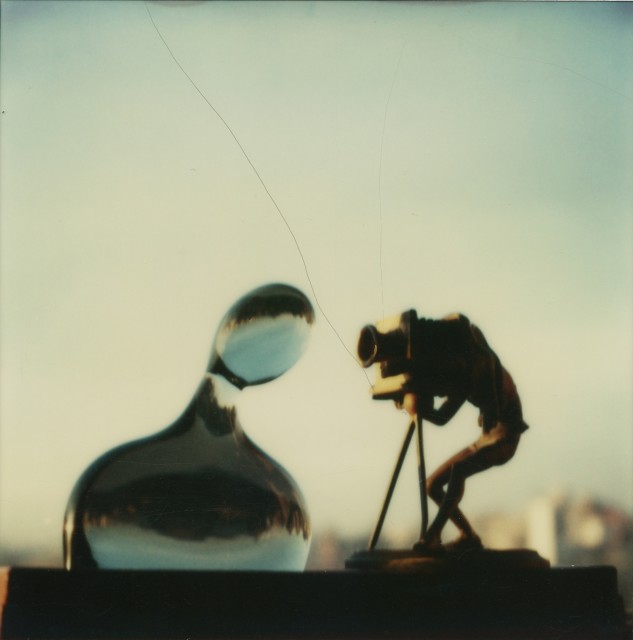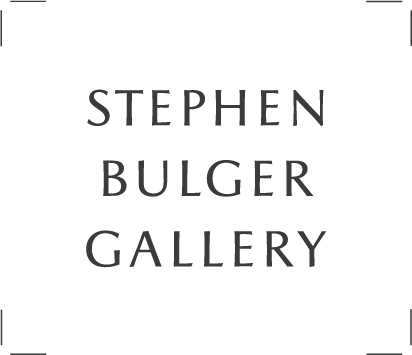Exhibition Dates: October 27 – November 24, 2012
Opening Reception: Saturday, October 27, 2-5pm
Conversation in the Gallery: Saturday, October 27, 2:30pm. Join us for a conversation between Robert Gurbo, Curator of the Estate of André Kertész, and Stephen Bulger.
This PREMIER exhibition of André Kertész’s “Self-portraits” marks the 100th anniversary of the artist’s first photograph and spans over eight decades of his extensive career.
Selected from a collection of over 1,000 self-portraits, these images offer a fascinating glimpse into the psyche of one of photography’s early masters. In 1912, Kertész received a small format glass plate camera from his mother as a high school graduation present. He and his younger brother Jeno delved into the medium by taking photographs of each other, as well as their family, friends and street scenes in and around Budapest. Shortly thereafter, Kertész hired a machinist who fashioned a small spring loaded device that he designed for his camera that enabled him to take self-portraits (Kertész later insisted that he had invented the world’s first self-timer for a camera).
When Kertész was drafted into the Austro-Hungarian army in 1914, Jeno sent him an ICA Bebe camera, which had a magazine of seven plates that allowed him to work more fluidly. During this time he frequently took self-portraits that were sent home. In many of these photographs, Kertész would often pose in conversation with his fellow subjects; in an effort to make the images look natural, creating an atmosphere of interaction and comradery. In these photographs, Kertész skillfully becomes a participant and an observer from within the photograph. We often find him slightly off to the side, actively watching the image while it is being taken. This became a methodology that he would use time and again in the future. After returning home from the war, he floundered through various careers. Frustrated by his inability to find fulfilling work, he wrote in his diary, “I am a nobody.” However, he continued to produce photographs during this time, including various self-portraits where he would present himself posed in a variety of situations and occupations such as an artist, a country bumpkin, a successful business man, a scholar, a beekeeper and he even photographed himself in drag. In these self-portraits, Kertész appears to have used the medium in an effort to establish a personal identity and credibility – as if trying on different hats in an attempt to define himself. Despite living with a deep sense of self-doubt, Kertész, for the most part, presented himself as happy and successful in these photographs.
With great trepidation, and at the insistence of his girlfriend Elizabeth, whom he would later marry, a despondent Kertész moved to Paris in 1925 in hopes of establishing himself as a photographer. Although lonely, poor and wracked with self-doubt during his first years in Paris, Kertész made great efforts to convince his family otherwise. He sent home many self-portraits depicting himself as settled and successful. Seeing right through his pretense, his mother and family responded by urging him to return home for a hot meal, friendship and family.
Kertész moved to New York City in October of 1936 where he struggled professionally and personally for decades. Here his self portraiture became bifurcated; while many images illustrate his despondent nature, others present a more upbeat attitude – the latter clearly representing his hopes and aspirations rather than the hard reality that New York life had presented. During this time he also began to make what could only be defined as projected self-portraits – photographs of inanimate objects, buildings or even other people that he said reflected his state of mind and which he insisted were self-portraits. Lost Cloud, 1937, and Melancholic Tulip, 1939, are some of the better known photographs that he defined as such. Looking at his entire oeuvre with this notion in mind reveals a wealth of images that, while not strictly self-portraits, obviously represent self reflection and take on deeper meaning.
The autobiographical imprint of his work is explored in an essay by Robert Gurbo, Curator of the Estate of André Kertész, which will be featured in an upcoming publication about these remarkable photographs by this extraordinary artist.


